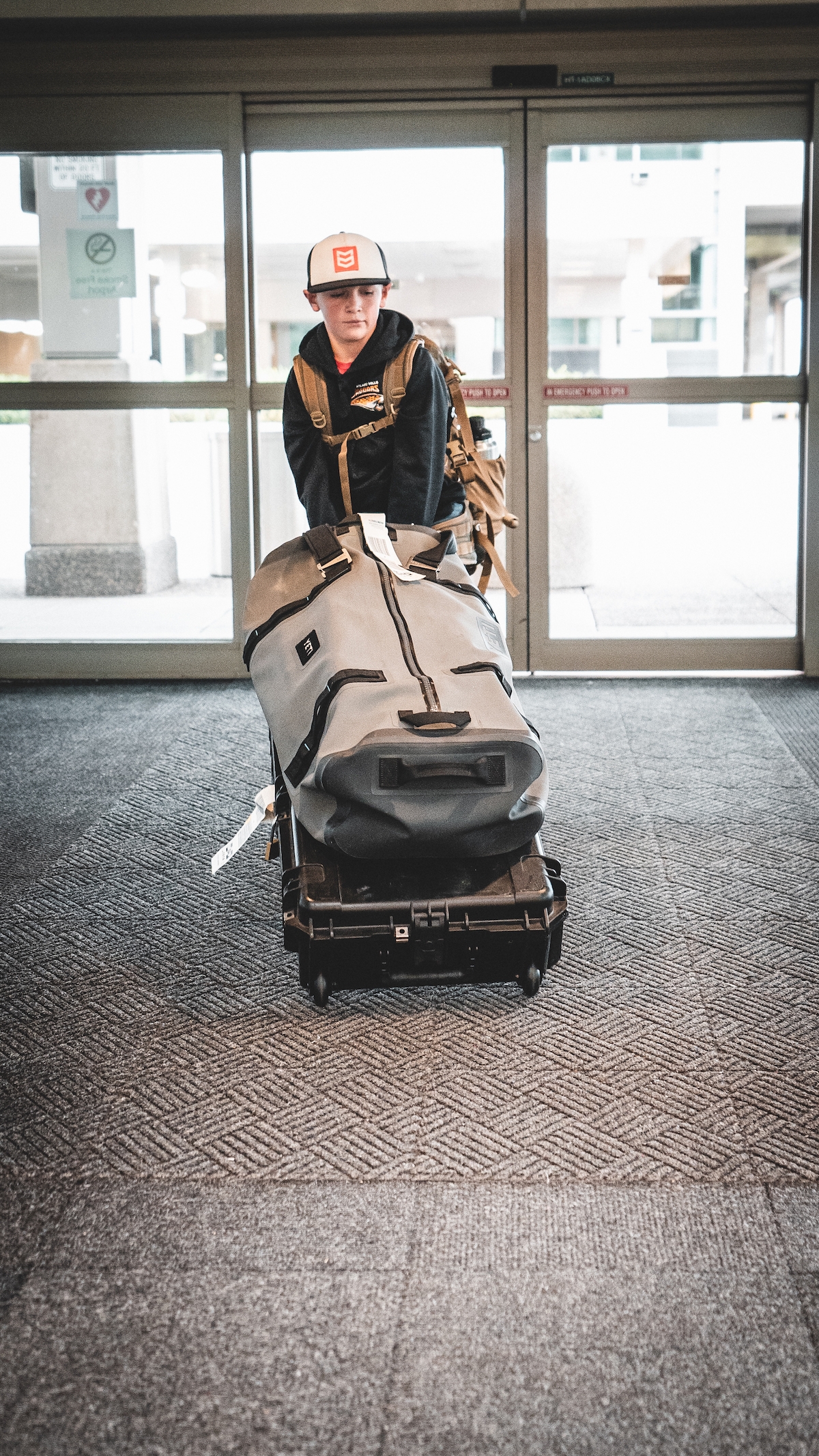Feb 14, 2020
QUICK TIPS FOR HAULING GAME MEAT HOME
The trickle of blood running down my cheek provided enough sensation to rocket me out of sleep and back into reality. It was our fifth day hunting elk in my home state of New Mexico. The temps were averaging in the mid 90’s, and this area hadn’t seen rain in weeks, pretty unusual for the Chihuahuan Desert during monsoon season. The heat and dry environment had proved too much for my sinuses and the inevitable bloody nose was the result.
Later that day my wife would kill her first elk, a dandy 6-point bull, taken with her bow at 20 yards. We finished the pack out on day six and the struggle to salvage the maximum amount of meat in the summer heat had begun. Seven days prior, I had filled two large Yeti ice chests with milk jugs of frozen water. Once the jugs were in the chests, I filled in the gaps with loose ice cubes to ensure the ice chests were as full as possible but not too full to properly seal. When we set up camp, I tucked the ice chests in the shade and hoped for the best.
During the hunt, I resisted the urge to check the ice level in fear that I would accelerate the melting process. Once we arrived back at camp with the bull, I hung the game bags under a large ponderosa and finally cracked the ice chests open. As expected, the ice had barely melted! I cooled the meat in the shade, processed it into more manageable pieces and split it between the two ice chests evenly. Two days later the bull was dropped off at the processor with very minimal meat loss.
It can be intimidating to come out west, hunt a new state and species, and make it home with the maximum amount of meat after a successful hunt. Below is a list of suggestions to help transport your hard-earned bounty home.
Save your jugs.
I’ve made it a habit to save my milk jugs. As I consume meat from the prior year, I fill the jugs with water and use them to fill the space in the chest freezer. They will last much longer than ice cubes when out in the field.
Ensure you have space.
A bull elk is larger than you think. They will definitely fill two, large 120-quart ice chests when you have the appropriate amount of ice. If you’re hunting a medium-sized animal (deer/sheep), a large ice chest will hold you over. Place the meat inside, and keep it topped off with the maximum amount of ice.
Sun is bad.
Sounds simple, right? But I’ve seen several instances where someone forgot to put the cooler back in the shade, and they accelerated the melting process dramatically. Keep it in the shade, especially if you’ve already filled it with meat. If you have it in the bed of your truck while you’re driving back home, cover it with a blanket or sleeping bag to better insulate it.
Don’t stress.
I regularly keep meat on ice for 7 to 10 days before I get the chance to freeze it or process it. Drain the bloody water and keep replacing the ice during your travels, and you’ll be fine. You can even fly home with a cooler or two full of meat. You’ll need to pay attention to weight limits and will most likely be charged for the extra checked baggage. But it’s a great way to get your hard-earned protein back from an adventure.
Lastly, if you have the chance to freeze it, do it.
I can’t tell you how many times I’ve heard someone say you can’t defrost meat then re-freeze it. Nonsense. Cut the meat into manageable pieces, freeze it and you’ll have absolutely no problem transporting it. Defrost it when you’re ready, or drop it off at the processor frozen. I have even seen guys who drive out to their hunts, pull a small trailer with their gear, ATV, generator and a small chest freezer and actually freeze their own meat in the field for the long ride home. Once their hunt is done, they load everything up, duct tape the freezer closed and they’re good to go.
It can be difficult to find success on a western hunt, not to mention getting the meat back home. But follow these useful tips, and you’ll increase your chances of bringing home the maximum amount of meat with the least amount of spoilage.
Flying Home?
If you’re traveling by plane to hunt, consider skipping the return flight home if the hunt was successful. You’ll have the added cost of renting a vehicle, buying a cooler and ice for the return trip. Still, in spite of these expenses, it comes out much cheaper than paying to have the meat shipped which, for elk, can run upwards of $1,000.

Article Photos: Garrett Drach
